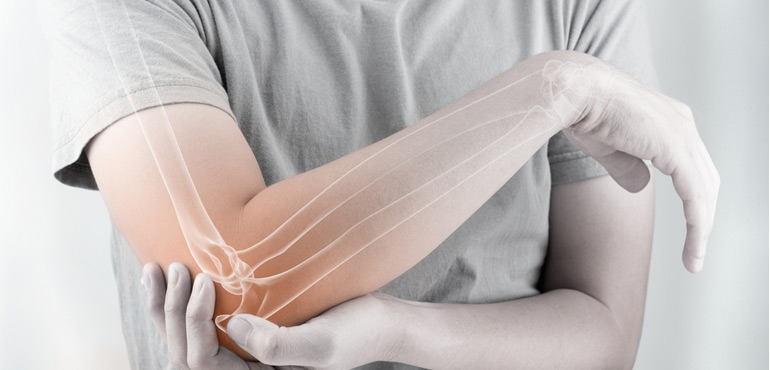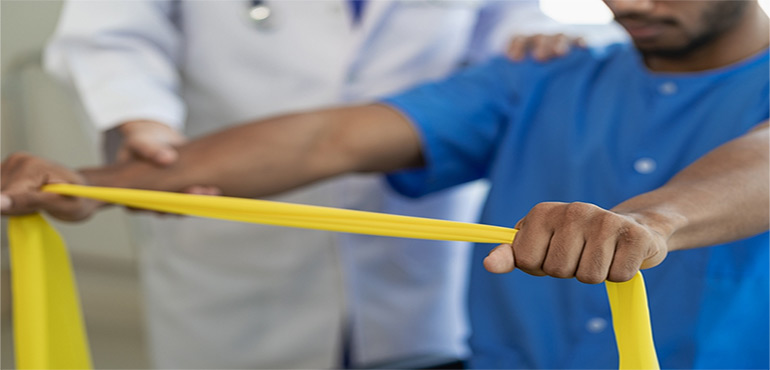Understanding Joint & Bone Injury
Do you enjoy an active life with sports, exercise, or everyday activities? Injuries happen, and seeking professional medical attention is crucial when they involve your joints or bones.
At Chakraverty Clinic, our team of experienced orthopaedic specialists is dedicated to helping you heal from joint and bone injuries quickly and effectively. We understand the pain and disruption these injuries can cause, and we're here to guide you through the recovery process.
Ignoring a joint or bone injury can lead to long-term consequences. Seeking professional medical attention ensures you receive the correct diagnosis and treatment plan to get you back to your active life as soon as possible.
Common Joint & Bone Injuries
Recognising the type and its potential severity is crucial when an injury strikes. Here's a breakdown of typical joint and bone injuries by location:

Upper Extremity
- Fractures: Clavicle (collarbone), humerus (upper arm), wrist, hand (fingers, metacarpals)
- Sprains: Wrist, fingers (common with falls or forceful gripping)
- Strains: Rotator cuff (shoulder), often caused by repetitive motions
- Dislocations: Shoulder (a pop or grinding sensation with limited mobility)
Lower Extremity
- Fractures: Hip, femur (thigh bone), tibia (shinbone), fibula (calf bone), ankle, foot (toes, metatarsals)
- Sprains: Ankle (a common sports injury with twisting or rolling)
- Strains: Hamstring (muscle in the back of the thigh), often caused by sudden sprinting or jumping
- Dislocations: Knee (severe pain and instability in the joint)

Spine
- Fractures: Vertebrae (spinal bones) caused by falls, accidents, or osteoporosis
- Sprains: Ligaments (connective tissues) supporting the spine
- Strains: Muscles surrounding the spine
Each injury type can come with various symptoms, including:
- Pain: Severity can vary depending on the injury type and location.
- Swelling: Inflammation caused by the body's healing response.
- Bruising: Discoloration of the skin due to broken blood vessels.
- Difficulty moving: Limited range of motion due to pain or instability.
- Deformity: Noticeable change in the shape or alignment of the joint.
If you experience any of these symptoms, Early intervention can significantly improve your recovery timeline and minimize potential complications.
Symptoms of a Joint or Bone Injury
Knowing the signs and symptoms of a joint or bone injury can help you seek medical attention promptly. Here's what to watch out for:
- Pain: This is the most common symptom, ranging from a dull ache to sharp, throbbing pain. The intensity of pain often correlates with the severity of the injury.
- Swelling: Inflammation caused by the body's healing response can lead to noticeable swelling around the injured joint.
- Bruising: Discoloration of the skin due to broken blood vessels is another telltale sign of injury. The appearance of bruising may take some time to develop.
- Difficulty Moving: Pain or instability in the joint can significantly limit your range of motion and make it difficult to perform daily activities.
- Deformity: In some cases, a fracture or dislocation may cause a visible change in the shape or alignment of the joint.
Pay attention to these warning signs, especially after a fall, accident, or forceful impact; it's essential to consult a doctor for a proper diagnosis and treatment plan!
Importance of Early Diagnosis and Treatment
Seeking professional medical attention as soon as possible after a joint or bone injury offers several advantages:
- Faster Healing: Early diagnosis and treatment can promote more rapid healing and a quicker return to normal activities. Proper immobilization, physical therapy, and medication can optimize the healing process.
- Reduced Risk of Complications: Neglected injuries can lead to complications like chronic pain, stiffness, arthritis, or even permanent disability. Early intervention can minimize these risks.
- Improved Long-Term Outcomes: With proper treatment, you're more likely to experience a full recovery with improved joint stability and function. Early diagnosis allows for addressing any underlying issues that may have contributed to the injury.
Remember, neglecting a joint or bone injury can have long-lasting consequences.

Joint & Bone Injury Treatment Services
Chakraverty Clinic offers comprehensive services to diagnose and treat joint and bone injuries effectively. Our team utilises the latest advancements to get you back to your active lifestyle as soon as possible. Here's a look at what
Diagnostic Services
- X-rays: These quick, painless imaging tests help visualise fractures and bone abnormalities.
- MRI scans: Detailed scans that provide a clearer picture of soft tissues like ligaments, muscles, and cartilage, aiding in diagnosing sprains, strains, and internal injuries.
Non-Surgical Treatments
- Casting and Splinting: Immobilization using casts or splints promotes the proper healing of fractures and helps stabilize sprains.
- Physical Therapy: Personalized exercise programs designed to improve strength, flexibility, range of motion, and balance, which are crucial for regaining full functionality.
- Medication: Pain management and anti-inflammatory drugs can help reduce discomfort and swelling during healing.
Surgical Intervention (when necessary)
- Our experienced surgeons perform minimally invasive procedures whenever possible to repair fractures, address ligament tears, or correct joint dislocations.
Schedule an Appointment
We understand that every injury is unique. Schedule an appointment today to develop a personalized treatment plan for your needs.
Book Your Appointment Now











